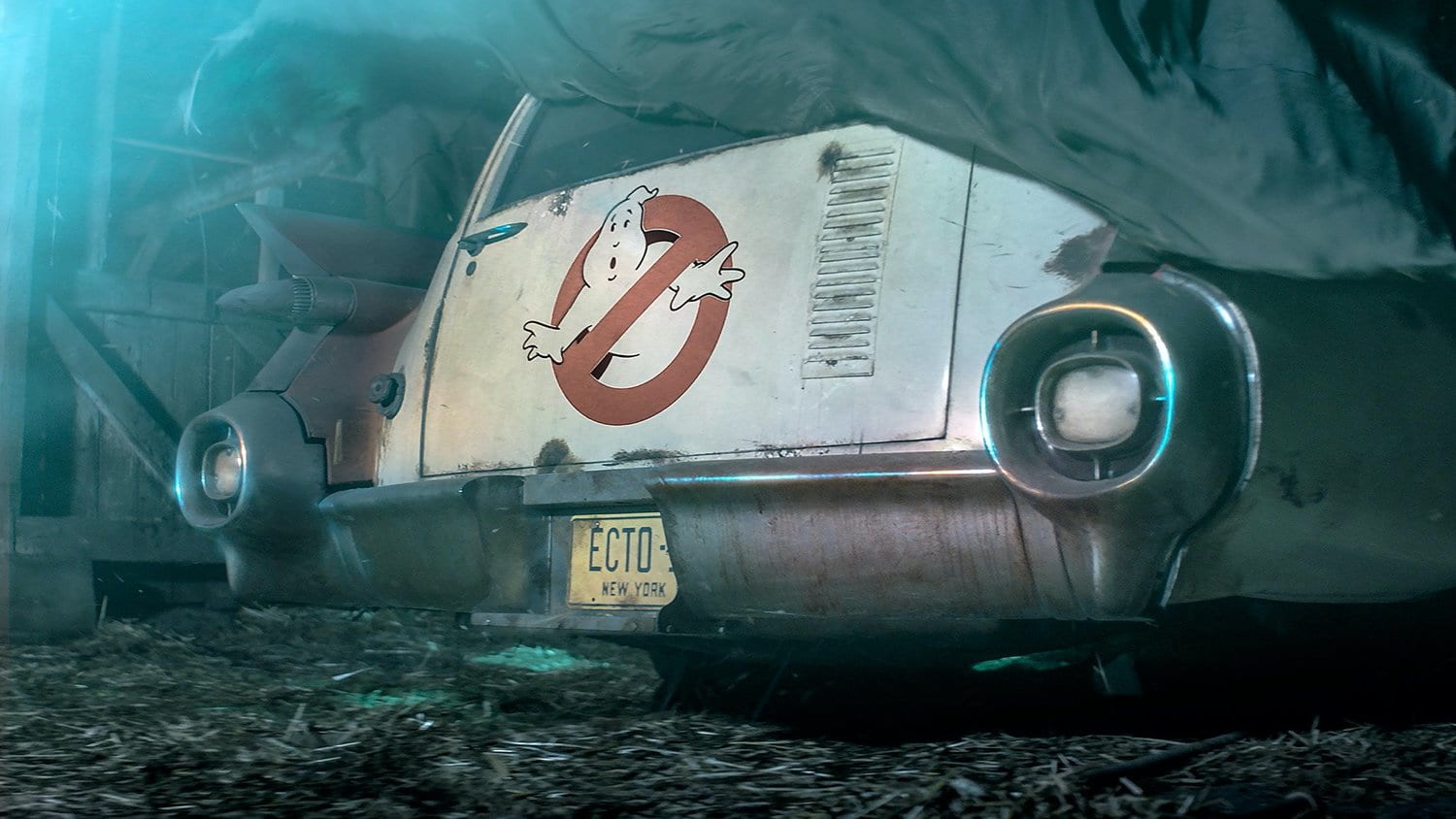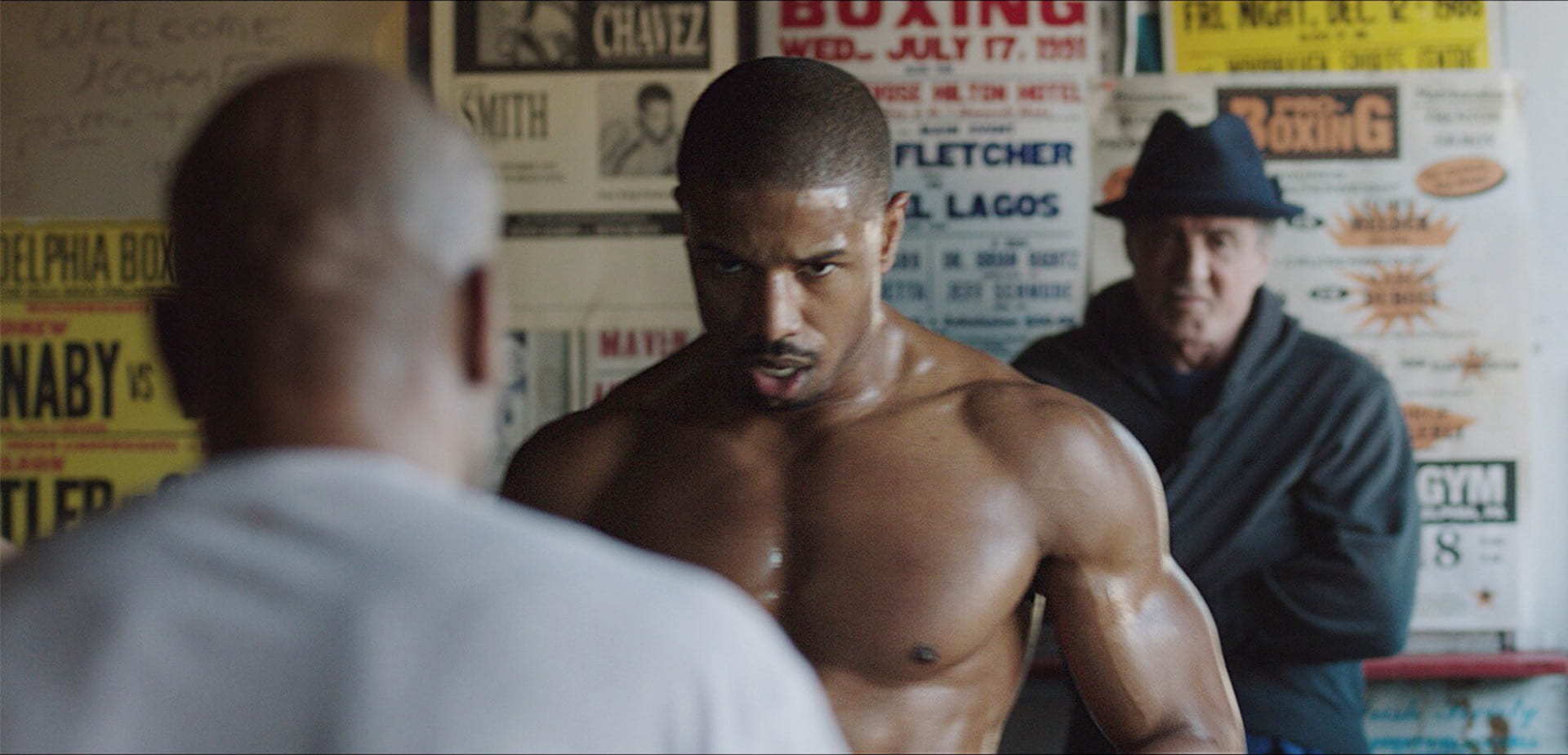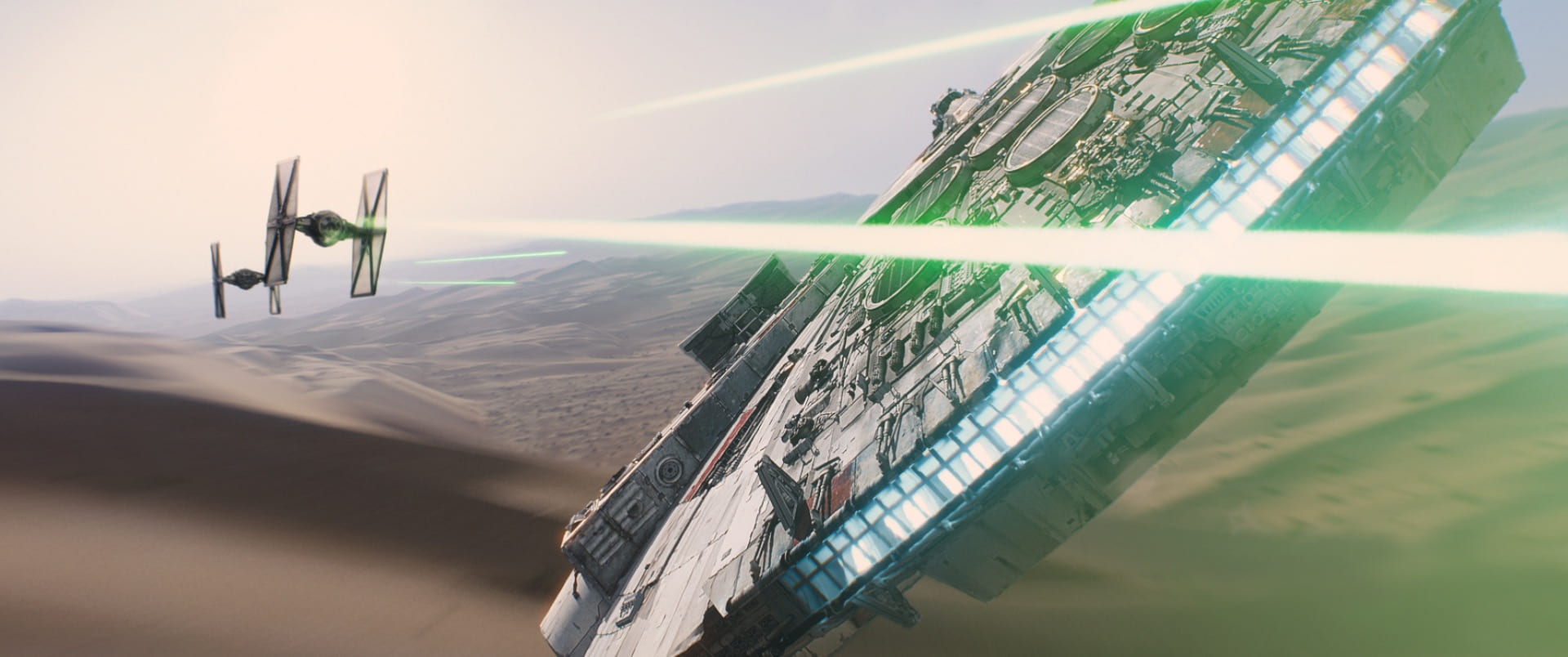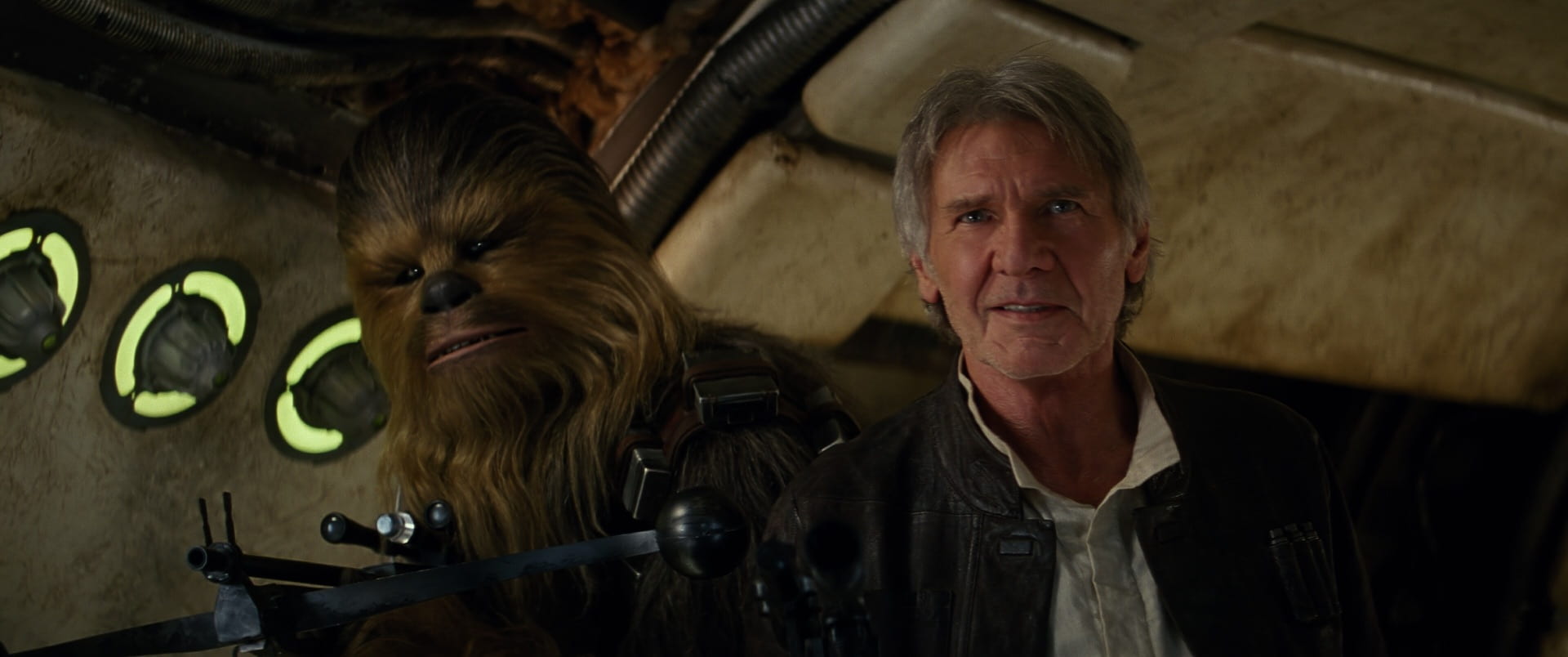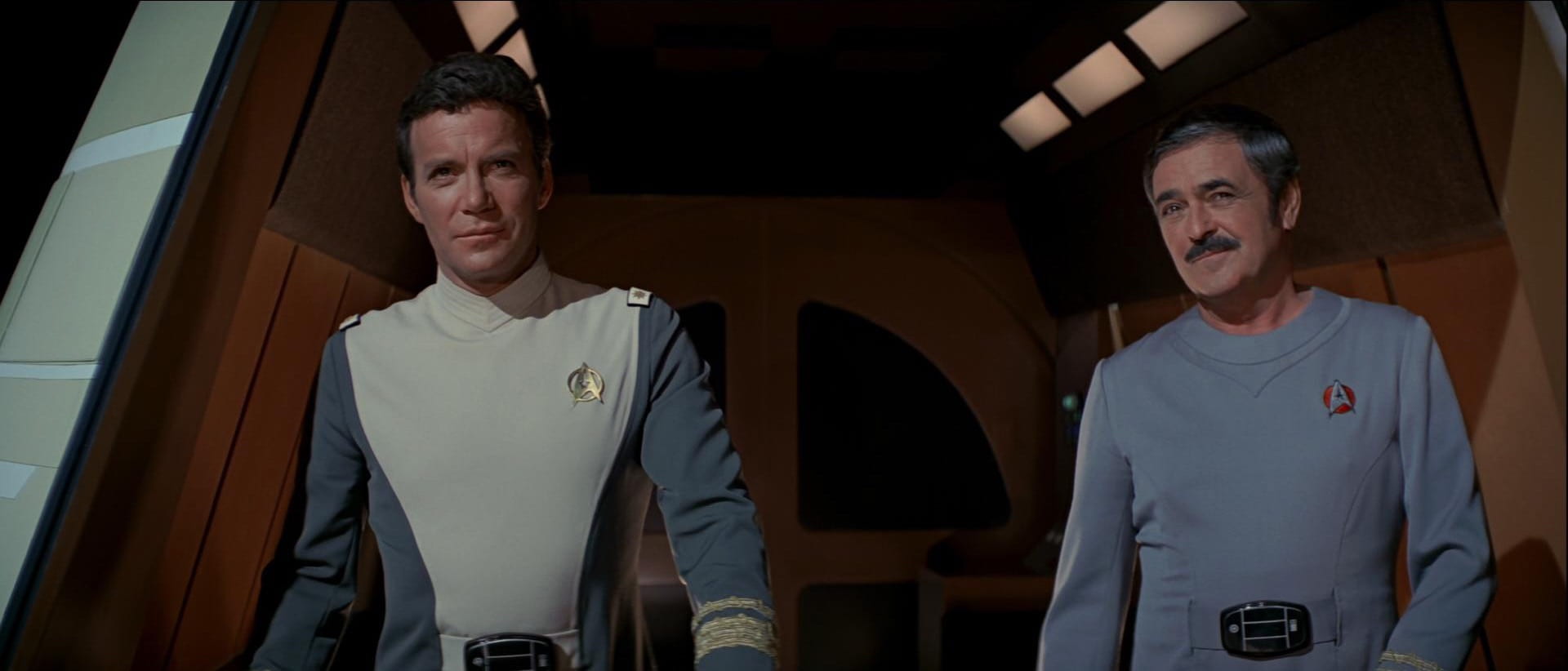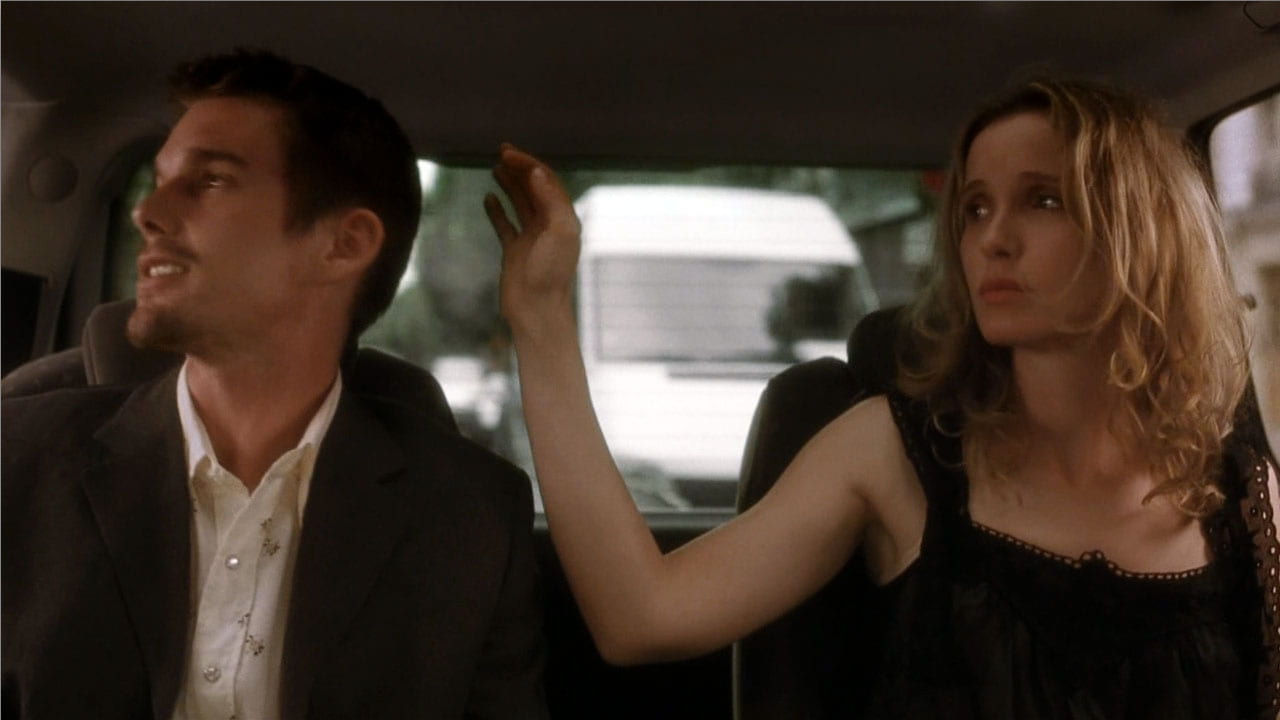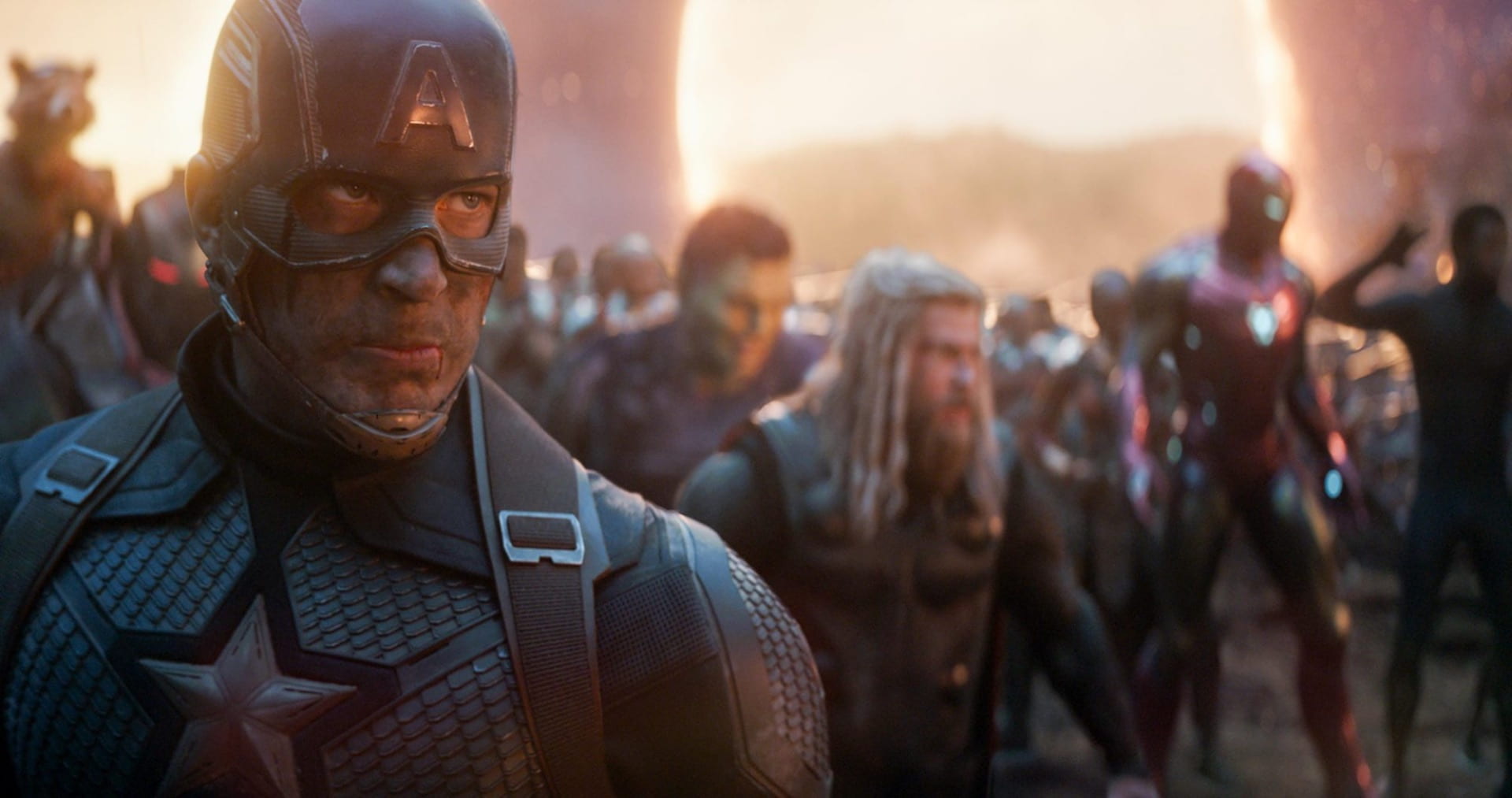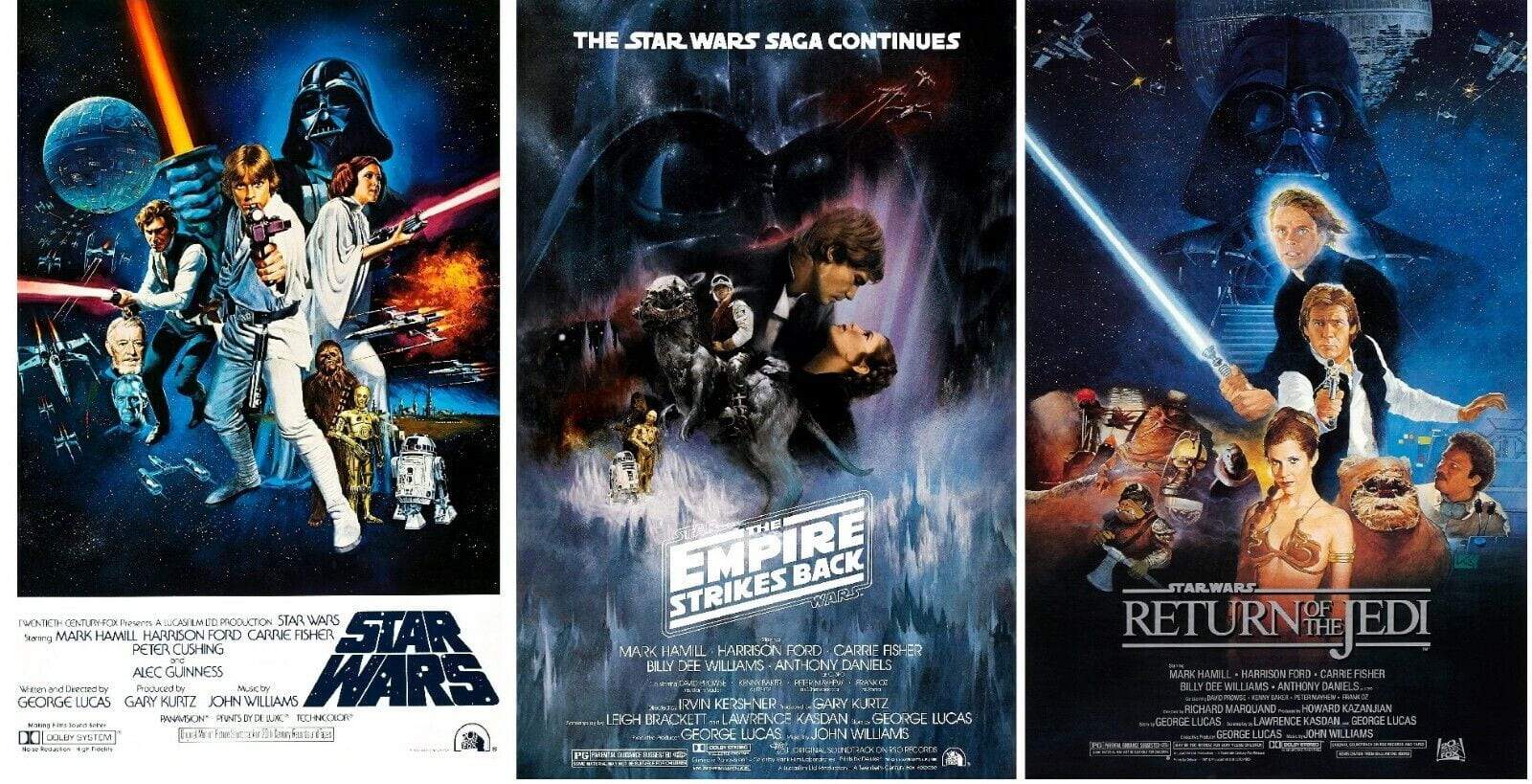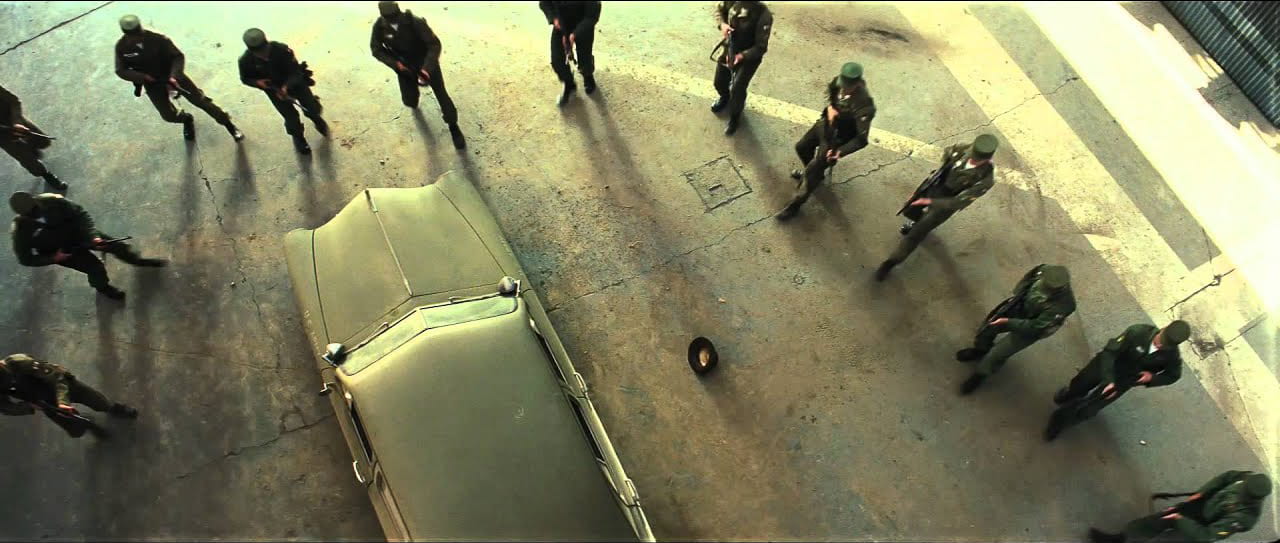
Indy’s hat on the ground outside a car surrounded by Communist soldiers in Indiana Jones and the Kingdom of the Crystal Skull
Beyond genre and story, stars are the most important part of a legacyquel’s marketing because the returning actors reprising their famous roles validate the legacyquel’s legitimacy even more than the character’s return does on its own. But that is only half of the importance stars bring to the legacyquel. As Kernan asserts, “The rhetoric of stardom is the only one of the three forms of appeal that relies on a feature of the film that possesses an indexical relationship to the social world.”[i] Stars are who they are, they have innate characteristics, and modern audiences care more than ever that the films they see feature different kinds of people than have been traditionally at the forefront of the kinds of movies that have legacyquels. There is, once again, a balance that most legacyquel trailer editors must control between selling the film on the backs of the older, returning stars and advertising the newer, younger stars who will take either prominent or secondary roles based on what the film is doing with its returning star(s). Rely too much on the returning stars and risk irrelevance to new audiences, while too much focus on new stars can have the returning stars and their devoted audiences feeling unsatisfied. Either of these outcomes leads to less excitement for the new legacyquel and more chance that it will be irrelevant rather than a true revitalization of the franchise in question.
There is one major problem that legacyquel trailer editors face: the fact that all of the returning stars will be older and therefore, in a youth-obsessed industry, less valuable than they used to be. However, as a counterbalance, the legacyquel came to prominence in a time when pre-established intellectual property is Hollywood’s biggest selling point for blockbuster franchises that make up the majority of legacyquel production. This focus on IP-based franchises has lead to a sense that stars matter less than ever, and when Marvel opens a new superhero film with a relative unknown like Chris Hemsworth or Simu Liu at the center of it, the notion can seem inescapable. The legacyquel, nevertheless, reminds us that actors (and stars in particular) are still crucial parts of selling a film. One need only look at the two 2010s portrayals of Han Solo to see what a returning star means to a film.
After the huge success of Harrison Ford’s return to the role in The Force Awakens, Disney greenlit a Han Solo prequel film clearly meant to be the first in the series given how much setup for a larger conflict occurs in the final act. But Alden Ehrenreich’s performance in the role drew criticism for both being too imitative and not close enough to Ford’s unique swagger. In studying what stars bring to the films they star in, Richard Dyer finds that it is “the repeated use, within films and through the films of a star’s career, of certain mannerisms, which do the job of personalizing the type the performer plays. These may be relatively ‘naturalistic’ mannerisms, but they are different and repeated enough to constitute idiosyncrasies. These form the basis of the individual star’s performance style.”[ii] Harrison Ford’s star image, reliant upon a delicate balance of being coolly aloof until he gets in way over his head at which point he becomes manically over-the-top, is very difficult to imitate. It’s in his sighs, his gait, even his mouth bouncing back and forth between a wry smile and an intense grimace that the Harrison Ford ‘thing’ becomes apparent. Audiences saw that star image develop over the course of numerous films, including Star Wars, Indiana Jones and Blade Runner, each of which eventually received a legacyquel where much of the draw was his return as Han Solo, Jones, and Rick Deckard. These legacyquels, however, had to sell him in different ways and took different approaches to his aged appearance.
In the Indiana Jones and Kingdom of the Crystal Skull’s first trailer a full half of the runtime is dedicated to reestablishing not Ford as Jones but Jones the character via recurring iconography like his hat, whip, and even khaki slacks. Before any new footage is shown, viewers are reminded of all of the prior adventures Indy had via iconic shots taken from all three previous films. The trailer editors chose to hide Ford’s face and instead relied at first upon the aspects of the character that didn’t age, up to and including his silhouette. The first full face reveal of Ford features the dialogue “This won’t be easy,” to which Ford responds “Not as easy as it used to be.” This dialogue in combination with his older, more wrinkled face and grey hair and stubble indicates the pose the film will take with the character of acknowledging his aged body and allowing Ford to play the character with a bit more hesitation and bemused slowness. Based on this trailer and, indeed, in the full film, Indy seemingly isn’t much different from how he was the last time audiences saw him in 1989, he’s still a professor and adventurer, he can still do all of the same kinds of stunts he did in those earlier films. He’s just a little slower at it and the trailer editors (and filmmakers) are smart enough to know that this should be acknowledged and even poked fun at. In this way, a sense of continuity is reestablished and audiences are promised that their favorite history professor will be up to his old tricks again, no matter the time that has passed since last they saw him.
The return of an actor as a beloved character doesn’t just reinforce the desire to see that beloved actor but also revives the whole world they once inhabited. The full trailer for The Force Awakens uses Ford in this way as he once again comes in halfway through to briefly appear onscreen and give a voiceover that carries through the next minute or so of the trailer. In his brief appearance audiences are again reminded of his iconic look, leather jacket over white shirt, now replete with grey hair and stubble. His shoulders are more hunched by age than pulled back in Han Solo’s laconic style. And yet, this is Han Solo, no doubt. His presence starts to confirm the importance and even reality of the Star Wars universe, and his voice over continues this work as he says in response to Rey asking about the stories of what happened earlier, “It’s true, all of it. The dark side. The jedi. They’re real.” Here Ford’s gravely voice is used to impart even greater gravitas as he reaffirms both the “reality” and importance of the prior films he was in. Over the course of those films Han Solo went from loner skeptic to rebel leader and best friend to the most powerful man in the galaxy, so having him here say words he once tossed off as a joke like “the dark side” and “jedi” with the kind of near-religious weight some audiences feel for them not only confirms that this new film is indeed a direct sequel to those, it confirms for audiences familiar with these concepts and his prior disapproval of them that they were right to care about them. It’s not just the lines he’s saying, it’s the fact that it’s him saying them the way that he does that makes this such an effective marketing strategy. It speaks to not only his return but the return of the whole storyworld that audiences loved the first time around.
As trailer editors for legacyquels have shown in the prior two trailers examined, there are many possible combinations of prior iconic imagery and new footage, especially when mixed with the score associated with the famous films and characters that preceded the legacyquel and will return in it. There is, however, yet more possible ways to leverage the returning star, which is to create an aural contrast between the past and present. The announcement trailer for Blade Runner 2049 achieves this by playing Ford’s lines from the original film over new footage of Ryan Gosling walking around in the 30-year-later future world of Blade Runner. Ford’s lines are not the most famous, but they adequately set up what a Blade Runner is and reminds audiences of what his character was like, especially as they play over a man who looks a lot like the younger Ford in silhouette (which is mostly how he is shown). “Replicants are like any other machine” Ford says from the past, “they’re either a benefit or a hazard. If they’re a benefit it’s not my problem.” These lines appearing in this trailer might have been the only appearance of Ford in the entire marketing and finished film and they’d be effective in setting up the stakes and continuity of the film. The trailer (and filmmakers) is not yet done with him, though, as he returns later in the trailer once again aged with grey hair and stubble. He speaks a few more lines and their content is not as important as the juxtaposition between his prior lines reused from the original film and the lines from this new one where his voice is noticeably more gruff and somehow even more mumbled. Ford has not only visibly aged but audibly as well. Each of these three films use Ford’s aged appearance and way of being in the world to great effect as they contain reflections on the passage of time and the change that has happened within the storyworld offscreen via his character and others. Whether it is through juxtapositions of visual or aural elements from prior films to the new films or the actor/character saying lines that directly affirm the connection between the old and new, legacyquel trailers rely on the returning stars to entice audiences to the theater to experience their old favorites once again.
[i] Ibid., 63.
[ii] Dyer, Richard. Stars. New Edition. London: British Film Institute, 1998.
